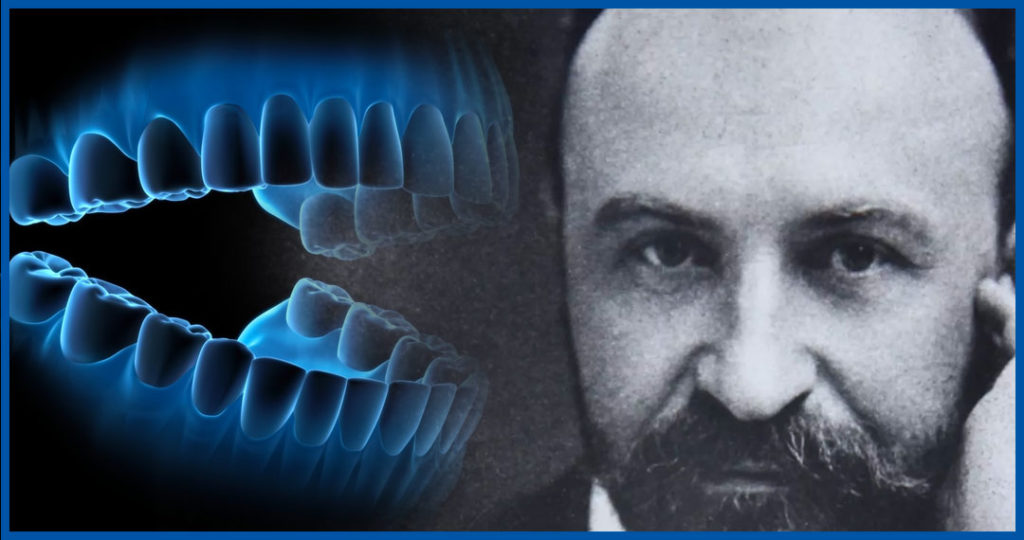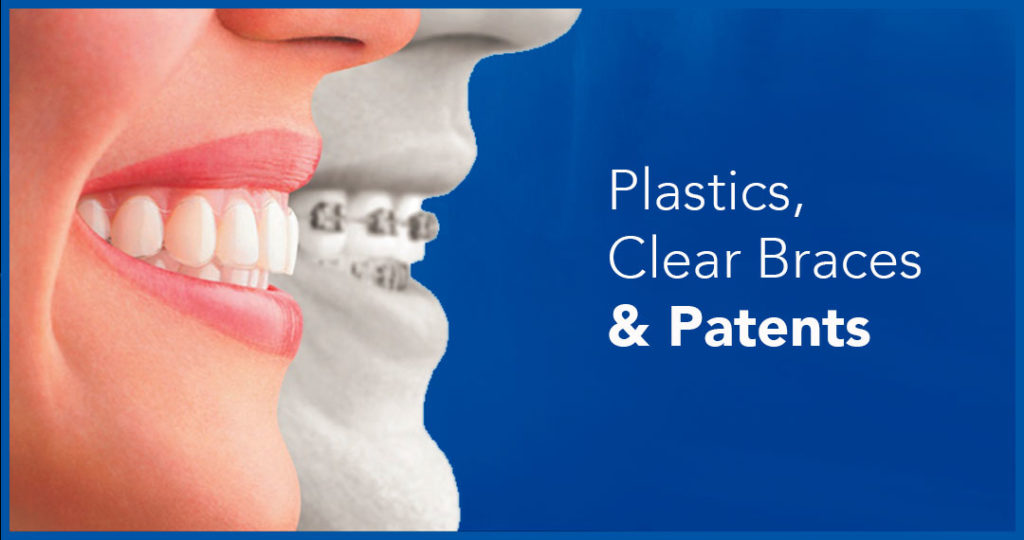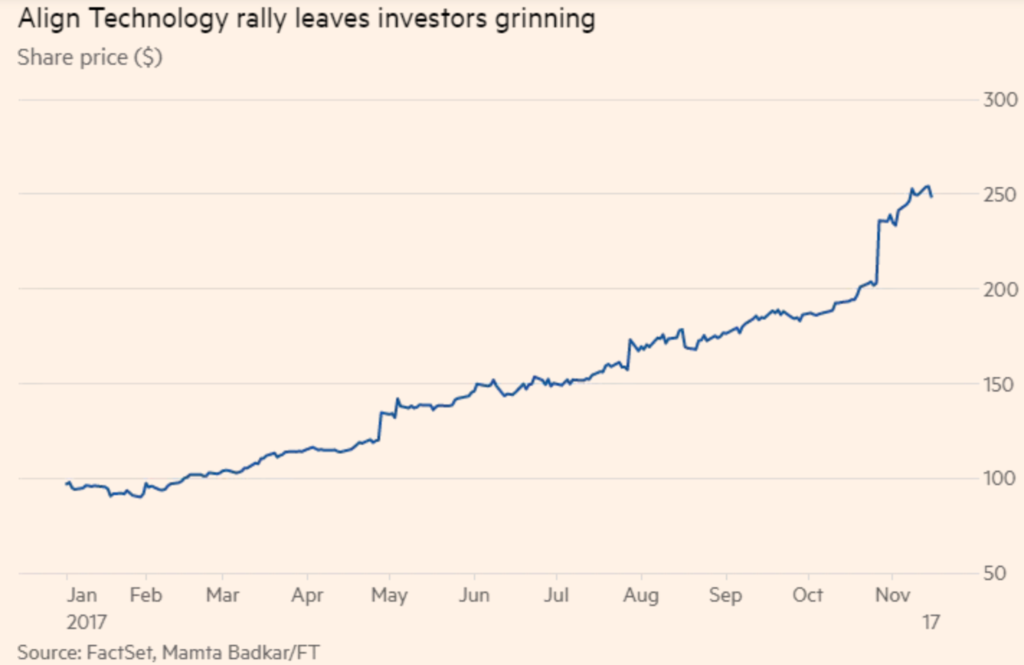How Plastics and Intellectual Property Protection Have Reshaped the Orthodontic Medical Device Sector

I recently tipped my hat to one of the greatest inventors of the 20th Century, Dr. Leo Baekeland, The Father of Modern Plastics whose initial invention, Bakelite, led to the development of over 15,000 industrial products, uniquely shaping events in the medical device sector, including how business leaders tackle intellectual property concerns and patents.
Nowhere is this intersection of plastics history, medical device innovation and patent protection more prominent than in the highly competitive world of dentistry orthodontics, when in 1997, an upstart startup, Align Technology, appeared on the scene to challenge traditional Metal braces with a clear, plastic aligner called Invisalign that ultimately led to the rollout of over 700 patents to protect the innovative product from lookalike products that sprung up around it.

Indeed, ever since that momentous day when Dr. Baekeland (after five years of intensive research & experimentation) astounded the world with the first test-tube evidence of non-flammable synthetic plastic, patents have played a key role in protecting his inventions and those beneficiary companies that appeared later in the medical device sector that used this novel material.
Tactical IP Error
But even this great, meticulous chemist and industrial entrepreneur – despite winning over 100 patents with the United States Patent Office (USPTO) – was not immune to the occasional slip-up, allowing his famous Bakelite plastic patent to expire in 1927. A rival, Catalin Corporation, gobbled it up and made some commercially-successful refinements to the polymer production process.
This historical intellectual property ‘hiccup’ has overtones with the present, as market behemoth Align Technology recently let 40 patents expire, triggering infringements from rivals that’s only partially protected by its remaining IP arsenal (more or less evenly split between U.S. and international patents; 700 in all).
This IP is essential in allowing the market leader to protect its patented process that involves digitally planning and manufacturing clear, semi-invisible braces for patients. Roughly 23 patents are expected to expire up to the year 2028, leaving a gap for rivals to exploit. In fact, if you had to ask any CEO what keeps him or her up at night it’s the thought of a cheaper rival sneaking in to steal market share. Patents allow business leaders to get some sleep at night.
Confidence is High
Still, despite the expected annual attrition on their patents, Align seems to be in a confident mood proclaiming that “competitors are probably one decade behind us in terms of building comparable digital and build-out technology.”
Their current financial success seems to support this conclusion with shares climbing over 160 per cent over the last 12 months — adding $12.35bn to its market valuation since the end of 2016.
“That has outstripped the 17.4% gain for the broader S&P 500 healthcare sector and the 15 per cent advance in the benchmark S&P 500,” said The Financial Times.
It’ estimated that over 5 million patients have been treated with the Invisalign system and this number is growing rapidly. The Invisalign system is offered in more than 90 countries worldwide by Invisalign-trained doctors to their adult and teenage patients.
The Big Idea
The original idea for Invisalign was formed when Chishti wore braces whilst working as an investment banker at Morgan Stanley. During his treatment with a retainer intended to complete his treatment, he posited that a series of such devices could affect a large final placement in a series of small movements.
But cracking the medical device sector, particularly replacing metal with plastic to straighten teeth, has not been an easy road. It was a bold decision by two Stanford MBA students to conceive and launch Invisalign in 1999. “It took 15 years for people to really believe that you can move teeth with plastics,” they said.
Both Zia Chishti and Kelsey Wirth, with ZERO background in orthodontics or teeth straightening, instinctively knew that clear braces could revolutionize dentistry. Just like Dr. Leo Baekeland who made some early mistakes in his inventing career, the young techs admitted to their own blunders, including blowing too much of their early IPO cash on sales and marketing to consumers, which initially put them in the red.
Further, the early models were not perfect products in any sense. They could only correct very simple issues like minor gaps between teeth and on occasion the clear aligners themselves would crack.
Market Leadership
It was only when a new CEO came onboard in 2002 that things started to turn around. Marketing budgets were slashed and the leadership team largely began targeting orthodontists and dentists in the United States, at the expense of international exposure. The uptick in clinical research also helped improve the product’s edge in both production and sales.
In addition to the more targeted approach, the leadership team has zealously pursued patent protection for its plastic-oriented products that are constantly under threat from opportunistic competitors.
Align recently filed six patent infringement lawsuits against 3Shape’s TRIOS intraoral scanning system and Dental System software claiming their tech infringes key Invisalign patents.
In another pragmatic and astute commercial move, Align also dropped its patent lawsuit with Smile Direct Club, taking up a minority 19% stake and a supply arrangement with the company as it works to grow Invisalign market share.
Plastics and Medical Devices
It’s also worth reminding readers the impactful role plastics has played in the broader medical device industry.
Metal has been the traditional material of choice for orthopedic or any surgical instrumentation, but new plastic resins, combined with scientific process development and validation, having been making inroads into traditional markets.
Medical devices, in general, are in a constant state of evolution, responding to trends within and outside the hospital environment to achieve better care at lower system costs.
As an example, polymers and synthetic compounds have been introduced for hip socket replacement in orthopedic applications due to their close resemblance to the natural polymeric tissue components. This of course does carry risks since polymers undergo degradation in the body environment due to both biochemical and mechanical factors.
As the trends toward miniaturization, portability, improved aesthetics, and environmental responsibility drive ongoing changes in medical devices, selecting the right materials has become more critical.
The Age of the Selfie
In this respect, the original founders of Align Technology were light years ahead of their competitors in the orthodontics arena. Their focus on aesthetics and the invisible, malleable appeal of clear braces has also fortuitously peaked during the age of social media and the pervasive “Selfie”.
According to the Financial Times, Align’s popularity has swelled as both adults and teens increasingly opt for the convenience of self-removable braces. The magical attraction of invisibility boosts self-esteem as millennials snap photos of themselves on Instagram and Facebook.
In fact, teenagers account for about ¾ of the orthodontic market. Sales to this segment are increasing by roughly 40% each year.
The blazing trail forged by Align Technologies in orthodontics is being echoed in the wider medical industry where plastics usage in medical devices is continuously evolving with the introduction of new types of medical devices, advances in polymer technology, and legislative and regulatory changes .
The Rise of Plastics In Medical Devices
To put this in perspective, The global medical plastics market reached about 12.8 billion pounds recently and is expected to grow at an annual rate of over 6.2%, consuming approximately 13.6 billion pounds in 2017, and over 18.3 billion pounds in 2022, as shown in the following table.
There are hundreds of companies that convert resins into medical devices derived from resin manufacturers or plastic compounders. Some of these firms specialize in one or two product areas; others supply a wide variety of products. Regulatory bodies, such as the U.S. Food and Drug Administration (FDA), exercise enormous control since new devices must have approval before they can be introduced into the marketplace, which is a costly and time-consuming process.
However, as demonstrated by the recent Align Technology example, Intellectual Property protection is perhaps an ever bigger consideration when strategizing whether your medical device can hold off competitors.
The Power of Medical Device Patents
It’s estimated that the annual number of new patent cases for all technology classes increased from 2,644 filings in 2008 to to over 6000 in 2016, while medical device patent litigation has followed the same general trend.
During the same period the annual number of new medical device patent cases increased from 177 to 325 filings. This number will only go up over the next few years.
It’s fitting that the inventor of plastics, Dr. Baekeland, saw the power of patents early on in his career and became a key influencer in Intellectual Property policy making, as he rose in stature as an American innovator. Align Technologies embraced both his technology and his approach to revolutionize the orthodontics sector with plastic, clear braces protected by powerful U.S. and international patents.
However, this is an ongoing process, for both startups and larger enterprises who continue to innovate and produce new products. Failure to maintain, extend and procure new patents can open the doors to rivals and lost market share.
This complex landscape explains why innovators should work with board certified patent attorneys early on in the process to win and keep market edge. It ultimately affects the bottom line.
Ask a Question
https://www.medicaldevicepatentattorneys.com/2017/12/how-plastics-and-intellectual-property-protection-have-reshaped-the-orthodontic-medical-device-sector/trackback/

